special modifications
Occasionally radios arrive at our 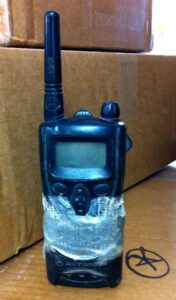 repair facility with some unique modifications. These two CP100 UHF radios arrived together from one of our very favorite nursery companies. They were just so special we thought we’d take a picture or two and blog about them.
repair facility with some unique modifications. These two CP100 UHF radios arrived together from one of our very favorite nursery companies. They were just so special we thought we’d take a picture or two and blog about them.
The first radio is a classic example of a radio with poor transmit and receive, caused inadvertently by the user. Both the microphone hole and the speaker grill are covered by duct tape. We can see the reason for the duct tape engineering, the carryholder was broken, and the user wanted the radio to stay in the carryholder. However, in doing so, they blocked the transmit and receive of the radio. Radio lesson: Be watchful when applying tape or stickers to the front of a radio. You might be covering up something you will need.
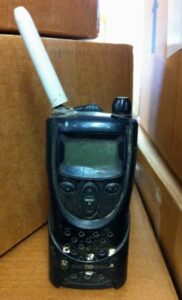 The second one had lost its antenna covering and the user had fashioned a Sharpie pen cartridge to cover the coil. Now while this might be all the rage in the Sharpie fashion world, it is a very temporary fix for the problem. This radio would begin to lose range due to the coil being exposed to the outside elements. Little by little the coil would oxidize and/or corrode, until the radio’s transmit and receive would be shortened dramatically. So if you need to do this for a day or two, great, but then follow it up by getting the radio to the repair repair center and a new antenna installed. 2022 note: Replacement parts are no longer available for the original CP100 radio. Check with us for availability of batteries, chargers, and carryholders.
The second one had lost its antenna covering and the user had fashioned a Sharpie pen cartridge to cover the coil. Now while this might be all the rage in the Sharpie fashion world, it is a very temporary fix for the problem. This radio would begin to lose range due to the coil being exposed to the outside elements. Little by little the coil would oxidize and/or corrode, until the radio’s transmit and receive would be shortened dramatically. So if you need to do this for a day or two, great, but then follow it up by getting the radio to the repair repair center and a new antenna installed. 2022 note: Replacement parts are no longer available for the original CP100 radio. Check with us for availability of batteries, chargers, and carryholders.
If you have questions about radios or radio repair give us a call here at Delmmar Communications, 800-872-2627. We are always happy to help.
2022 note: Replacement parts are no longer available for the original CP100 radio. Check with us for availability of batteries, chargers, and carryholders.
The replacement radio for this model would be the CP100d, CP185 or BPR40d.
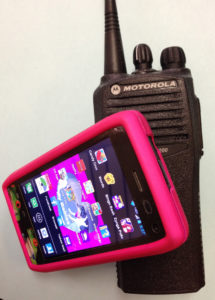
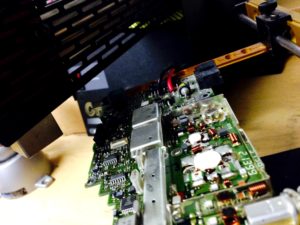 6) Business radios are usually
6) Business radios are usually 
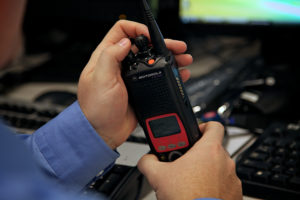


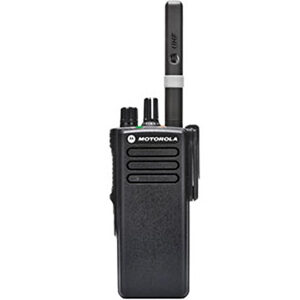
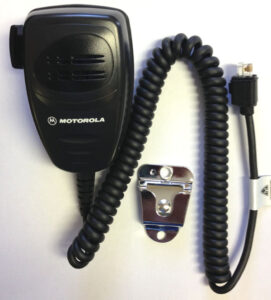
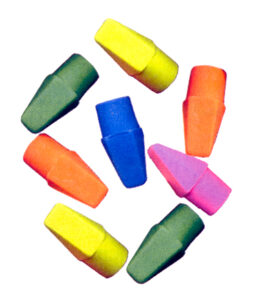 You want to help keep your 2-way radio working problem free and possibly out of the
You want to help keep your 2-way radio working problem free and possibly out of the 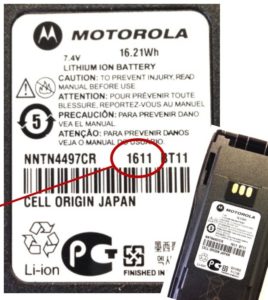 If you are still having difficulties, check your battery’s age. There should be an easy to read date code on the label. For
If you are still having difficulties, check your battery’s age. There should be an easy to read date code on the label. For